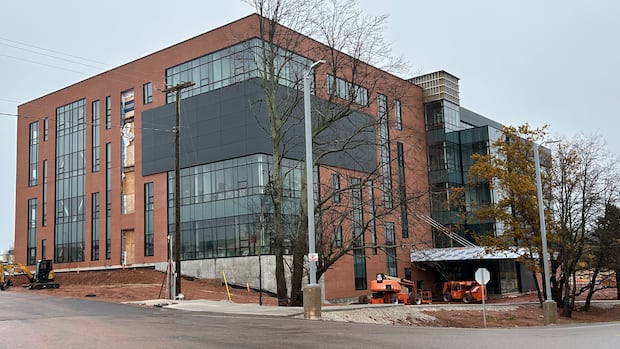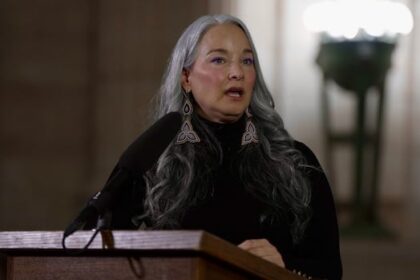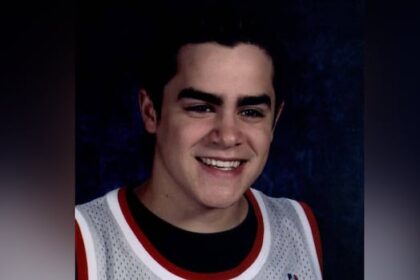PEI·NewUPEI’s new Clinical Learning and Simulation Centre uses lifelike scenarios, from patient actors to high-tech manikins and a mobile ambulance unit, to help students and health-care professionals practice real-world medical skills in a safe environment.The centre helps students learn skills through realistic scenariosThinh Nguyen · CBC News · Posted: Oct 18, 2025 5:00 AM EDT | Last Updated: 30 minutes agoFrom left, Tammie Muise, director of the clinical learning and simulation centre, and Catherine O’Brien, a standardized patient with the centre, spoke with Island Morning host Mitch Cormier during CBC’s remote broadcast from the Fox and Crow Pub on campus. (Thinh Nguyen/CBC)When Catherine O’Brien began her acting career years ago, she never imagined it would one day lead her to a role on a medical school team.Her first experience came in Ontario, working part time with the University of Toronto on a program where regular people played patients in simulated medical scenarios to help train future health-care professionals.Now, the familiar P.E.I. actor and director is continuing that work at the University of Prince Edward Island’s new medical school.LISTEN | UPEI’s Medical School has new patient simulation equipment for students:Island Morning8:56UPEI’s Medical School has new patient simulation equipment for studentsUPEI has a new Clinical Learning and Simulation Centre, where students can use manikins and other technology to learn about medicine before they start treating real patients. We learn more about the centre and the work happening inside. O’Brien works part time as a standardized patient at the clinical learning and simulation centre (CLSC). There, she plays scripted roles to help students practise skills in realistic situations.“They will learn how to interview, how to ask the right questions, how to make the patient feel comfortable using empathy,” O’Brien told Island Morning host Mitch Cormier during CBC’s remote broadcast from the UPEI campus last week.“And so we just respond to their questions, we tell them what our symptoms are and we go through a typical scenario.”The clinical learning and simulation centre is housed inside UPEI’s new medical school. (Stacey Janzer/CBC)O’Brien said the centre’s team of standardized patients comes from a wide range of backgrounds, not just actors.“The goal here is so that the students can have an environment that is safe, that they don’t have to feel nervous, because… it’s a real situation that they will see with a simulated patient,” she said.Training for the real worldPaul Charles, the centre’s simulation program manager, said that beyond working with standardized patients, the program also includes other tools to replicate what learners will experience in real clinical settings.“We do that by recreating the simulation rooms like clinical hospital rooms, where they’re actually going to see medication carts and vitals machines, all the way to using manikins that can breathe and talk and cough and have heart attacks and seizures to expose the learners to the real thing and bridge that gap between classroom education and the real world,” Charles said.“So that the students become more competent, more confident, which in turn improves the patient outcome, decreases the demand on the health-care system, and ultimately saves lives.”Simulation program manager Paul Charles says the centre uses tools like recreated clinical hospital rooms and high-fidelity manikins to expose learners to real-world scenarios. (Thinh Nguyen/CBC)The training isn’t just for students. Health-care professionals can also use the centre’s equipment and resources to sharpen their skills.Tammie Muise, the centre’s director, said a new addition — a “simulation rig” — will help bring that training directly into real health-care environments.“It’s a trailer that’s pulled by a truck, but in the back of that, it actually is the inside of an ambulance,” Muise said.“So if they were simulating a situation where the ambulance was pulling up with someone who was having a stroke or a heart attack, that they could simulate that experience where we know, really, time is of the essence in those kinds of situations, so they can really fine-tune those skills to help improve patient outcome.”As for O’Brien, she’s already met some of the medical school’s first cohort of students during their orientation day, and she looks forward to working with them in upcoming training sessions.“I have a few coming up, which I’m excited to get going with,” she said.With files from Island Morning
Learning by doing: Inside UPEI’s new medical simulation centre












